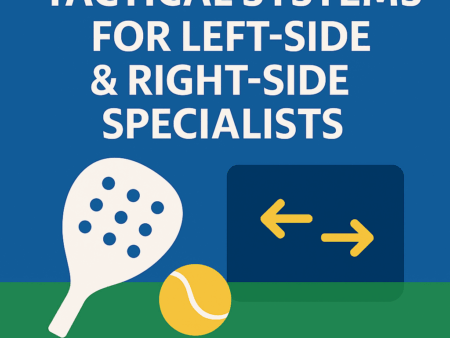Using the glass walls is one of the biggest differences between Padel & tennis — and one of the hardest skills for beginners to master. Instead of fearing the walls, great players use them to turn defense into control, reduce errors & reset tough points.
This guide explains exactly how to use the glass walls properly so you can defend like a more experienced player.
1. Why the Glass Walls Matter in Padel
The glass walls give you extra time to react, keep rallies alive & help you defend powerful shots.
Using the walls properly helps you:
- Stay calm under pressure
- Control fast balls
- Avoid unforced errors
- Reset points effectively
- Turn defense into attack
If you ignore the walls, you’ll panic, swing late or miss easy defensive shots.
2. The Back Wall: Your Best Defensive Tool
The back wall gives you valuable extra time when the ball bounces deep or fast.
When to use the back wall:
- Opponents hit a strong drive
- The ball bounces too close to your feet
- You don’t have time for a direct return
What to do:
Let the ball bounce → hit the glass → THEN take your shot.
Benefits:
- More time
- Better control
- Cleaner contact
- Higher margin for error
The back wall is your safety net — trust it.
3. The Side Wall: Managing Angles & tricky rebounds
The side wall is great for neutralizing angled shots or smashes that curve outward.
When to use the side wall:
- Opponents hit cross-court
- The ball angles away from you
- You can’t reach the ball before it hits the wall
Tips:
- Move early to read the angle
- Give yourself space
- Keep your racket face steady
Side-wall defense requires patience & positioning, not power.
4. The Double Wall (Side + Back)
This is a more advanced—but essential—defensive skill.
When to use the double wall:
- Opponents hit hard, deep cross-court shots
- You’re pushed into the corner
- You need time to recover positioning
How it works:
The ball hits the side wall → then the back wall → then you return it.
Once you learn this, tough defensive situations become much easier.
5. Footwork: The #1 Key to Wall Defense
Great wall defenders don’t stand still.
They adjust early.
Footwork rules:
- Move backward early when the ball is deep
- Keep a wide stance for balance
- Turn your body sideways to control the shot
- Avoid hitting too close to the wall
Good footwork gives you clean, controlled contact.
6. Keep Your Racket Low & Compact
When using the walls, big swings lead to errors.
Instead:
- Use compact swings
- Keep the racket below the ball
- Aim for height & depth over power
Your goal is to reset, not attack.
7. Use the Walls to Slow Down the Game
If opponents are hitting hard, the wall helps you absorb speed.
Use it to:
- Reset difficult balls
- Buy extra time
- Prepare a controlled lob
- Reorganize with your partner
Using the wall turns chaos into calm.
8. Turning Wall Defense Into Attack (The Bajada)
The bajada is a powerful attacking shot played after the ball bounces off the back glass.
When to use it:
- Opponents hit a weak smash
- The ball rebounds at the perfect height
- You are balanced & positioned well
A clean bajada lets you counter-attack & steal the net back.
9. Common Mistakes When Using the Walls
Avoid these beginner errors:
❌ Standing too close to the back wall
❌ Swinging too hard
❌ Panicking on fast balls
❌ Not giving the ball space to rebound
❌ Trying to take every shot directly
Using the walls correctly eliminates most of these mistakes.
10. Quick Summary: Wall Defense Made Simple
- Don’t fear the glass — use it
- Step back early & give yourself space
- Keep a compact swing & soft hands
- Use the double wall when needed
- Let the ball rebound, then hit
- Use lobs & resets to recover the net
The walls make Padel more strategic, more controlled & more fun. Once you start using them confidently, your defensive level skyrockets.


